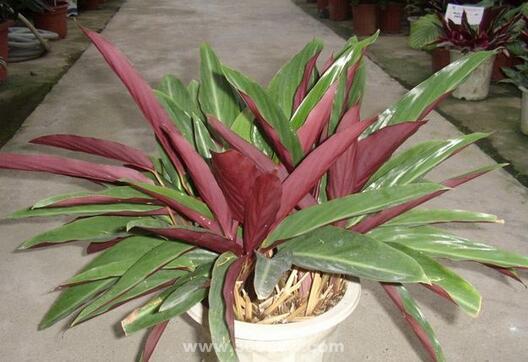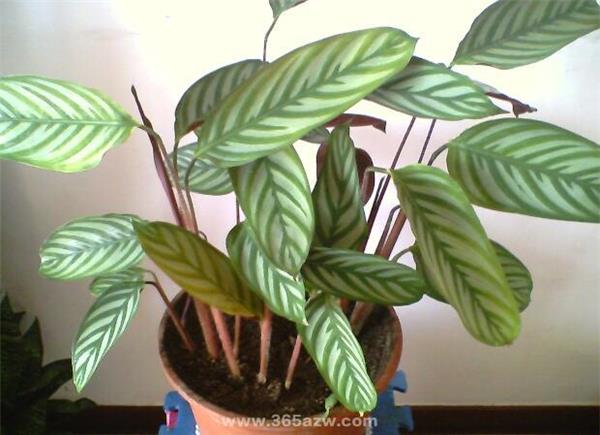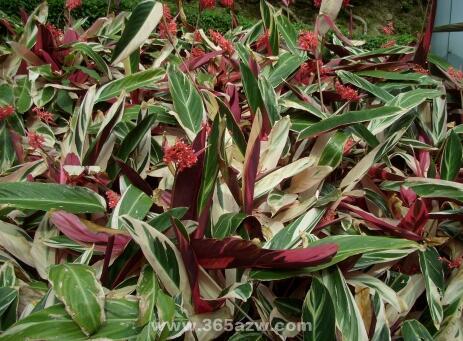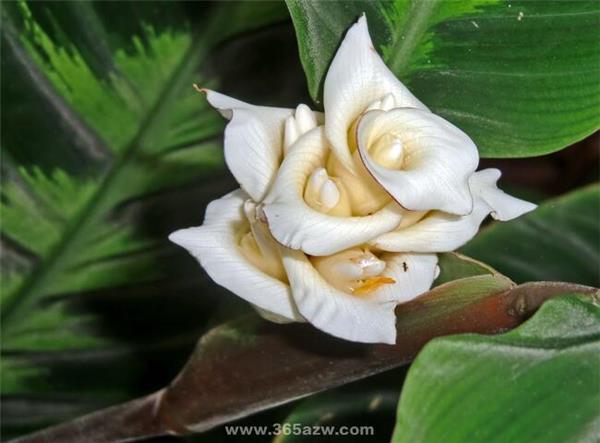Culture methods and matters needing attention of purple back taro
Purple back arrowroot is mainly used as indoor potted decorative plants, very ornamental value, purple back arrowroot cultivation should pay attention to what problems? Let's take a look.

Introduction to Purple Back Potato
Purple back arrowroot whole plant about 1 meter, erect. Leaf blade long ovate or lanceolate. Its branches and leaves grow dense, plant shape plump, thick leather quality, dark green leaves with luster, midrib light color, leaf back blood red, and leaves form a sharp contrast, very beautiful. Spikes, bracts and calyx bright red, petals white. The back is purple.
Daily maintenance of purple arrowroot
Light: Although purple back arrowroot can withstand high temperature, but in the summer high temperature environment, long time full light will affect its leaves, so in summer to appropriate shading, only 70-80% of the light can be. In general, its shade-loving characteristics make it ideal for indoor cultivation as a foliage plant.
Moisture: The optimum growth temperature of purple arrowroot is between 20-30 degrees Celsius, and in winter, the temperature above 5 degrees Celsius can safely overwinter. Water less during winter to prevent frost. In the growth period, its demand for water is large, so it is necessary to observe the humidity of the basin soil frequently. Once it is slightly dry, it is necessary to replenish water in time. Of course, if there is extra energy, it can sprinkle water on the ground to increase the air humidity and promote its growth. In the process of watering, it is necessary to ensure that the drainage of the soil is good, otherwise excessive watering will lead to ponding in the basin and produce rotten roots.

Soil: Purple back arrowroot requires loose and fertile soil. Pot soil can be mixed with moldy leaf soil, garden soil and river sand in equal proportion to make culture soil. Leafy soil can provide nutrients needed for its growth, while river sand can improve the porosity and drainage of soil. Adding proper amount of basal fertilizer to soil as culture soil can provide rich nutrients for purple back arrowroot.
Fertilization: Purple back arrowroot needs to be fertilized once or twice a month during its growing season. Liquid fertilizer can be used for fertilization. In order to ensure the normal growth of plants and the normal absorption of nutrients, they should be turned over every one to two years.
Diseases and pests: Purple back arrowroot in the breeding process often encountered diseases are leaf spot disease and leaf blight. If it is in the early stages of the disease can be sprayed with drugs to get sick. It is about spraying 200 times Bordeaux mixture or 65% Zineb WP 600 times solution 2-3 times every half month. Insect pests are often encountered by scale insects, which are caused by a stuffy environment and lack of ventilation. Can be used 50% fenitrothion EC 1000 times the liquid spray kill.
Purple back arrowroot propagation method:
Plants that grow vigorously can be potted once every 1-2 years. Dividing plants should be carried out after the temperature warms up in spring. The clustered plants should be divided into clusters along the growth direction of underground rhizomes, then planted in pots respectively, maintained in shady places, and managed according to conventional methods after rooting. In addition, can also be used to draw long with node stem and leaf for insertion propagation.
Purple back arrowroot is used to decorate bedrooms, living rooms, offices and other places, it appears quiet, solemn, can be enjoyed for a long time, if you like it, you may wish to try planting maintenance to beautify the home.

Purple back arrowroot cultivation precautions
1, purple back arrowroot is an excellent indoor shade-loving foliage plants, hot summer to prevent sunlight exposure, should cover 70%-80% of the light, otherwise easy to produce damage;
2. If the air humidity is low and the basin soil is dry, the edges of the leaves will be yellow and scorched, and direct sunlight will also cause the edges of the leaves to be yellow and scorched;
3. Purple back arrowroot should be turned over once every 1-2 years.
4. The function of purple back arrowroot
Lying flower arrowroot is mainly potted for indoor decoration and is an excellent indoor shade-loving foliage plant. It is an excellent foliage flower plant, used to decorate bedrooms, living rooms, offices and other places, which is quiet and solemn, and can be enjoyed for a long time.

The above is the purple back arrowroot cultivation methods and precautions related to the introduction, I hope to help you.
- Prev

What are the reasons for the yellowing of green pineapple leaves? what should we pay attention to in green pineapple culture?
What are the reasons for the yellowing of green pineapple leaves? what should we pay attention to in green pineapple culture?
- Next

Stripe twelve roll maintenance skills and precautions
Stripe twelve roll maintenance skills and precautions
Related
- Wuhan Hospital Iron Tree Blooming Result Was Instantly Frightened by the Gardener Master
- Which variety of camellia is the most fragrant and best? Which one do you like best?
- What is the small blue coat, the breeding methods and matters needing attention of the succulent plant
- Dormancy time and maintenance management of succulent plants during dormancy
- Minas succulent how to raise, Minas succulent plant pictures
- What are the varieties of winter succulent plants
- How to raise succulent plants in twelve rolls? let's take a look at some experience of breeding twelve rolls.
- Attention should be paid to water control for succulent plants during dormant period (winter and summer)
- Watering experience of twelve rolls of succulent plants
- Techniques for fertilizing succulent plants. An article will let you know how to fertilize succulent plants.

